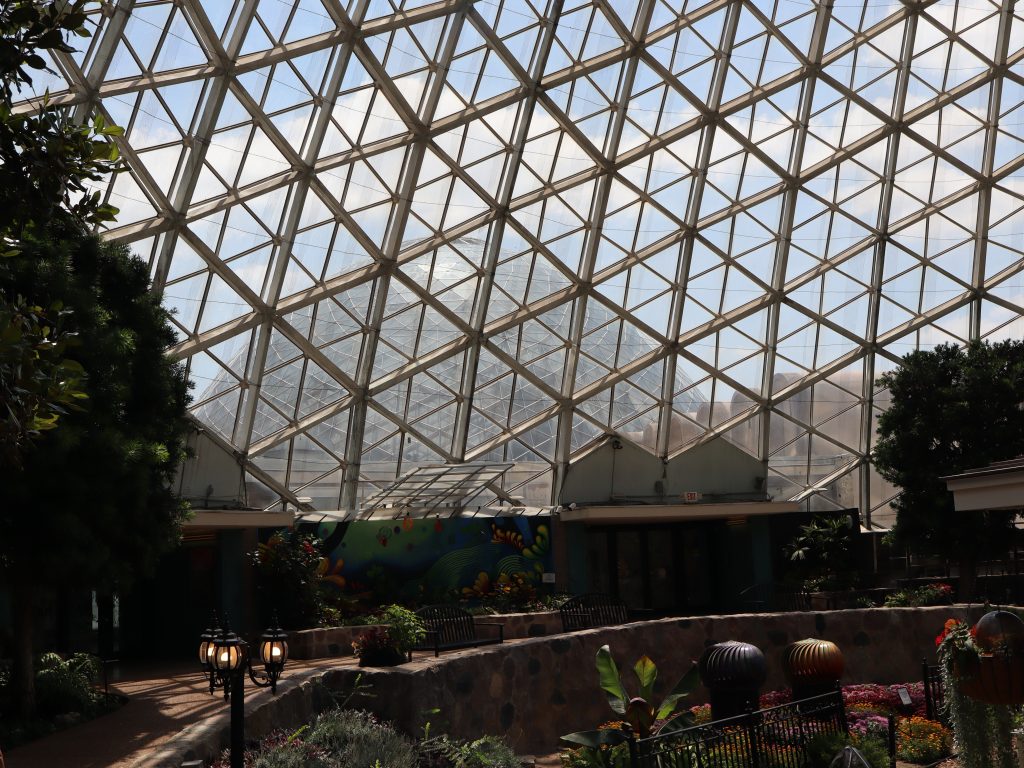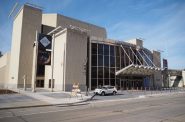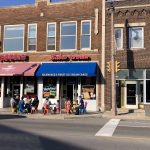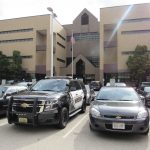Why Mitchell Park Needs The Domes
And why it matters so much for the people of Milwaukee's near South Side.

Mitchell Park Domes. Photo taken July 14, 2025 by Graham Kilmer.
Mitchell Park hangs in the balance.
One of Milwaukee’s great parks, it dates back to the very creation of the much loved public system. Now, having risen and fallen, Milwaukee County leaders have an opportunity to help the park rise, again; and deliver investment, and a win, for the people of the near South Side. But doing so will come at a cost, and at a time when policymakers are more busy tabulating what the county can no longer afford than considering what they want to build.
The Milwaukee County Board of Supervisors will vote Thursday on a policy commitment needed to advance a complicated $133 million plan to redevelop the Domes, building a new nature learning center and investing in natural and recreational amenities across Mitchell Park. The project is led by the Milwaukee Domes Alliance and was created in partnership with Milwaukee County Parks.
For it to work, Milwaukee County will need to commit $30 million over the course of six years to the project. If the board approves the resolution, Parks will include the first installment of $5 million in its 2026 budget proposal. But that installment will mean $5 million for other parks projects get sidelined next year, and every year after until the project is finished. The resolution has received backing from the county board’s Committee on Parks and Culture and the powerful Committee on Finance.
Mitchell Park was one of seven sites selected for park development during the initial years of the City of Milwaukee Parks Board. Located on the edge of the Menomonee Valley, itself immensely important to the development of Milwaukee in terms both geographic and historical, the park was created out of a patch of land locals called Mitchell Grove. Before the 19th century was over it became the site of a horticultural conservatory, expanded upon in the 1920s and 1930s.
In the second half of the 20th century as the parks system, Milwaukee and the whole country boomed with post-war prosperity, Mitchell Park saw a new birth. The old Victorian conservatory was replaced, between 1964 and 1967 with the three conoidal Domes. They were “dramatically modern in both design and display concepts,” as Harry H. Anderson, a former executive director of the Milwaukee County Historical Society wrote in a history of Milwaukee County’s first 150 years, Trading Post to Metropolis.
By the early 1980s, though, the tide had shifted. The county budget was starting to strain under years of expansion. Supervisors decided the parks system had been overbuilt and that taxpayers could not longer afford all of it, as former UW-Milwaukee History Professor Fred Olson wrote in Trading Post to Metropolis.
In 1994 the sunken gardens of Mitchell Park, which had been there for nearly its entire history, were removed. Marta Alamo, a Clarke Square resident, remembers watching dump trucks file into the park to fill them in. “So sad to see,” she told Milwaukee County Supervisors this month.
Marta and her husband, Art Alamo, are longtime Clarke Square residents. They’ve witnessed changes in the park, and the neighborhood, which borders Mitchell Park along W. Pierce Street. Art was raised in Clarke Square. After marrying Marta he bought a home there, one block from his mother’s house. When he was growing up the neighborhood was mostly German and Polish. Today it is mostly Latino.
“Just about every immigrant group that has come through Milwaukee, in any substantial numbers, has found themselves there,” said Ian Bautista.
Western European, Eastern European, Central American, Mexican, Carribbean and Southeast Asian families have all made a home on the near South Side, and remain there today, Bautista said, who spent five years as the executive director of the Clarke Square Initiative and served on the Domes Task Force.
“It’s a very hardworking neighborhood,” he said. The people there are “very enterprising, very creative.” The neighborhood is filled with people working multiple jobs just to get by, with people who dream of starting a business, Bautista said.
It is a neighborhood of immigrants, and always has been. Languages other than English are spoken in most of the homes, according to census data. The neighborhoods are bursting with young people and families. Many households are poor. The ZIP code that contains most of the near south side is home to 10% of all the people in the state of Wisconsin who are living in poverty.
These are the people who bring their children to Mitchell Park. They are also the people, who, more than anyone else, visit the Domes.
While working out a plan to save the Domes, the Milwaukee Domes Alliance conducted a yearlong study of attendance. They wanted to know who uses the Domes. “It’s, of course, our neighbors,” said Christa Beall Diefenbach, executive director of the Milwaukee Domes Alliance. “Our closest neighbors.”
The Domes attract visitors from across the region, and the state, but they are a persistent presence in the lives of south siders. More than 1,000 students last year visited the Domes on a school field trip conducted in Spanish, Diefenbach said.
Saving the Mitchell Park Domes is a mission driven in part by a desire to preserve their iconic architecture. The Milwaukee Domes Alliance is applying for their listing on state and national historic registries. It is also an effort to preserve the county’s horticultural conservatory, an important asset for the parks department and the public. It is also an opportunity to save the park itself and to do something for the people of the near South Side.
Mitchell Park has plenty of green space, but it lacks activation. So many of the elements and amenities that brought people to the park have fallen into disrepair or disappeared entirely. The Domes, the most dominating amenity of the park, visible from across the river valley, have been on the same path.
Policymakers have struggled for a decade to find a solution to the Domes, which are in a serious state of disrepair. Across the parks system there is infrastructure the county has not been able to maintain for a lack of funding. It’s estimated roughly $500 million would be needed over the next five years just to keep up with everything.
If county policymakers back out of the plan to save the Domes, and it doesn’t go forward, there will be less to do in the park. The county will continue operating the structures, at a loss, until they are unsafe and must be demolished, which cost estimates suggest would cost more than $11 million.
When Diefenbach became executive director of the Milwaukee Domes Alliance, then called the Friends of the Domes, she heard from local residents about their hopes for the park. First and foremost, they wanted a safer, cleaner park for themselves and their families, she said. Beall Diefenbach was dissuaded from early attempts to organize park cleanups by the sheer amount of syringes volunteers would come in contact with.
This is the reality that animates Sup. Juan Miguel Martinez as he tries to push a Domes project across the finish line. The supervisor represents the neighborhood and he has often said parks are a tool for community wellness and development; that an active park is a safe park. The neighbors, his neighbors, deserve a clean, safe park with amenities, the supervisor told Urban Milwaukee. The final phase of the project would see the development of a $27 million nature learning center built entirely with private funding raised by the Milwaukee Domes Alliance.
“There’s so much that’s going to be put into the Domes,” Martinez said. “There’s going to be the plaza, the playground, the cafe, the additional Dome. All of that stuff is intended to spruce up Mitchell Park.”
All of that adds up to more eyes in the park and a safer park, something the neighbors want, Martinez said. It also means south siders will get to see their Mitchell Park invested in like the many beautiful, leafy parks in wealthier communities.
“The East Side, they already have beautiful parks that are already clean, and they’re just kind of advocating to keep them that way,” Martinez said. “We’re advocating for us to be one of those parks.”
The Domes are “wrapped up in the psychological identity of the South Side,” Bautista said. Fixing the Domes and investing in the park tells the people of the South Side that they matter, that the place they live matters and that it’s a valued part of the overall community, Bautista said.
When the county says there is a future for the Domes, and for Mitchell Park, “that means that there’s a future for the people and the community that live there,” Bautista said. “So that’s the positive message that it sends.”
If the Domes project works, Martinez foresees economic and social ripple effects. The project has the potential to “elevate the self esteem of the neighborhood,” he said. “People are going to have something in their own district and in their own neighborhood that they can be proud of.”
If you think stories like this are important, become a member of Urban Milwaukee and help support real, independent journalism. Plus you get some cool added benefits.
More about the Future of The Domes
- Milwaukee County Board Reaffirms Commitment to Redevelopment and Restoration of Mitchell Park Domes - County Board Chairwoman Marcelia Nicholson - Sep 18th, 2025
- MKE County: Committee Cautiously Approves Domes Development - Graham Kilmer - Sep 3rd, 2025
- MKE County: Crowley Approves $30 Million for Domes - Graham Kilmer - Jul 30th, 2025
- County Executive Crowley, Chairwoman Nicholson Sign Legislation Approving Plan to Redevelop and Restore Mitchell Park Domes - David Crowley - Jul 30th, 2025
- MKE County: Board Approves $30 Million Commitment For Domes - Graham Kilmer - Jul 24th, 2025
- Why Mitchell Park Needs The Domes - Graham Kilmer - Jul 22nd, 2025
- MKE County: Parks Committee Backs $30 Million Domes Deal - Graham Kilmer - Jul 8th, 2025
- MKE County: Domes Plan Requires $30 Million From County - Graham Kilmer - Jul 2nd, 2025
- MKE County: Domes Project Lining Up Key Financing Component - Graham Kilmer - Feb 28th, 2025
- MKE County: Supervisor Adds Domes Project to 2025 Budget - Graham Kilmer - Oct 24th, 2024
Read more about Future of The Domes here
MKE County
-
Crowley Approves $30 Million for Domes
 Jul 30th, 2025 by Graham Kilmer
Jul 30th, 2025 by Graham Kilmer
-
Supervisors Waffle on Marcus Center
 Jul 30th, 2025 by Graham Kilmer
Jul 30th, 2025 by Graham Kilmer
-
How County Will Spend $9 Million in Drug Settlement Funds
 Jul 29th, 2025 by Graham Kilmer
Jul 29th, 2025 by Graham Kilmer






















I am one of those immigrant family children (26th and Mineral via the former Yugoslavia) who grew up in Mitchell Park and whose life was enriched in many ways by it. (And by the other great parks in Milwaukee.) I have also followed The Domes story with great interest and have a perspective on this situation that I believe has merit.
After decades of austerity, there is an understandable and underlying pessimism about big initiatives in Milwaukee. A tendency to focus only on the cost side and on being sure to spread what is available as evenly as possible among competing priorities. I believe that viewing The Domes through a singularly “cost” perspective would be a significant strategic mistake in this case for the following reasons:
First, the static view of The Domes, i.e., to see only the cost and not the enormous potential of The Domes as a major, revenue generating, destination, should be rejected and replaced by the vision that has been developed by The Domes Alliance. That vision is driven by a marketing approach that will produce major increases in attendance and revenue, justifying the investments being made in both The Domes and the park. It is no criticism of the underfunded Parks Commission that it has never marketed The Domes. Apparently, there is a sign with an arrow pointing toward The Domes somewhere near the airport, but that’s about it.
Second, ancient history and a relevant comparison. As a kid, Mitchell Park was always full of people of all ages and all kinds of activities. Ice skating and sledding in winter, sports in spring, summer and fall, along with picnics and families just relaxing. And the Flower House, predecessor of The Domes, and the Sunken Gardens. It was all very normal. I’ve spent most of my adult life living in New York City, next to Central Park. When I arrived, the park was in decline, and then steep decline: empty, dangerous, broken benches, broken everything, a joke on late night television.
(Response: “Hey, Milwaukee is not New York City dummy.” This is true, but the circumstances are so similar that it is striking, and the emergence of The Domes Alliance as a partner to County Parks is close to being identical to that between New York City Parks and The Central Park Conservancy, which has transformed Central Park into the world’s most admired urban park, with 40 million visits a year, including being invaluable to the lives of those of us who live near it.)
Third, This message is all based on the assumption that you actually can solve problems by throwing money at them, if it’s thrown in the right way by the right people. And that the money can be found.
Fourth, In this respect, The Domes Alliance can be the anchor not only for restoring The Domes and making it a destination, but also for revitalization of the entire park and a partner in building a healthier, safer community.
Finally, it’s worth considering what this location will become if the restoration isn’t funded, and The Domes is eventually demolished. What will replace it? What impacts on the community will that have.
Simple message: find the money for this next phase and support The Domes Alliance in building the partnerships and finding the money to achieve its long-term vision. And picture a park alive with people and lines of paying visitors from all over the country waiting to visit The Domes year around. Not achievable? Yes it is.
Once again Mr. Schneiger has provided each of us with a thoughtful, fact filled piece that over flows with common sense and thought provoking logic.
Thank you again.
frank schneiger, right again.
graham, well written and 100% on point
County officials reading this: save the f*cking Domes. If you let them go it’s at the expense of your jobs. We will see to it.
Yes, we want to have a vital park in this location, but notaligia is not a good reason to invest an inordinate amount of money renovating the Domes. It is my understanding that it would be more cost effective to build a new structure. As someone who has visited other plant conservatories, and found the Domes lacking, I would support replacing them with something more energy efficient and with greater capacity to serve the public.